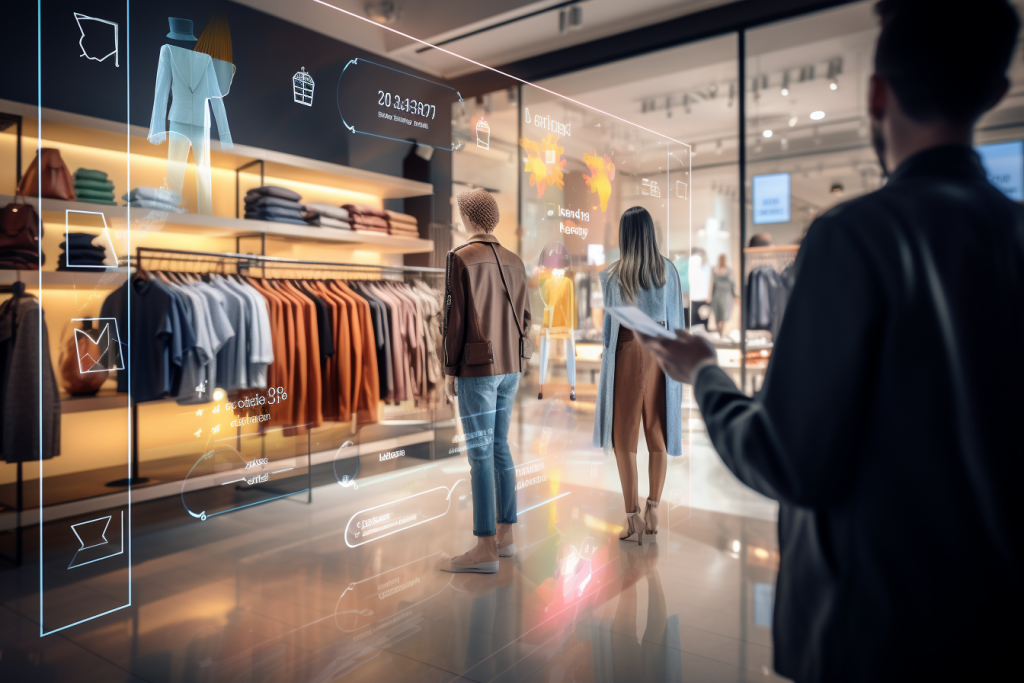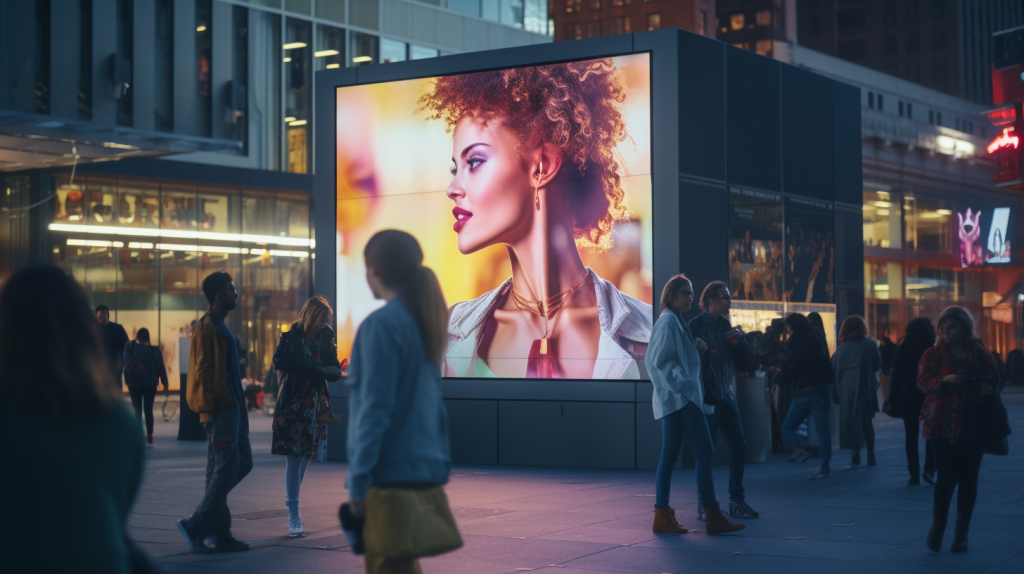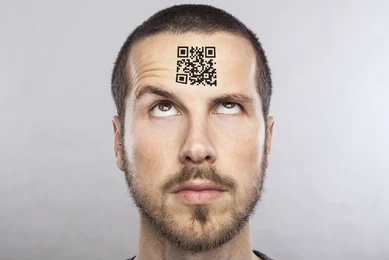Reading Time: 10 minutes
In today’s fast-paced technological age, a new term has risen to prominence: “Phygital.” At its core, the phygital definition encompasses the symbiotic convergence of the physical and digital worlds. It’s not merely a buzzword; it’s a transformative concept that reshapes our understanding of experiences and interactions.
So, what is phygital? The term melds “physical” and “digital” to describe experiences, objects, or systems that intertwine tangible, real-world elements with digital enhancements or functions. Phygital experiences can range from phygital retail, where brick-and-mortar stores use augmented reality to enhance shopping, to phygital NFTs (non-fungible tokens) that bridge the gap between tangible art and its digital counterpart.
Modern marketing, in particular, has been revolutionized by this phygital world. Phygital marketing strategies blend the best of both realms, offering consumers immersive experiences that are both physical-digital and digital-physical in nature. This approach has opened doors to innovative campaigns, from phygital crypto promotions to events where digital-to-physical and physical-to-digital transformations are at the forefront.
But why is this convergence so vital? And how do phygital examples, like phygital NFTs or phygital retail strategies, impact the broader landscape? As we delve deeper into this topic, we’ll explore the nuances of the phygital meaning, its significance in various sectors, and its potential to redefine the way businesses and consumers interact.
Whether you’re an industry professional, an intrigued consumer, or a curious onlooker in the phygital realm, prepare for an enlightening journey. We’re about to unpack the enigma of a world where the boundaries between digital and physical are seamlessly interwoven.
The Phygital Landscape: Beyond Traditional Boundaries

In a world where technology is omnipresent, the boundaries that once defined distinct realms are dissolving. The rise of the phygital realm exemplifies this, as businesses and consumers alike navigate an environment where the physical and digital not only coexist but coalesce. This synergy is reshaping industries, and nowhere is this more evident than in the retail sector.
Phygital Retail: How the Retail Industry is Embracing the Digital-Physical Crossover
Retail, traditionally a space of tangible interactions, is undergoing a metamorphosis. Phygital retail is not about replacing the in-store experience but enhancing it with digital touchpoints. Imagine walking into a store, where augmented reality (AR) mirrors offer virtual try-ons, or interactive displays provide detailed product information at a simple touch. QR codes on products can instantly showcase online reviews, and virtual assistants can guide customers through their shopping journey. These integrations elevate the shopping experience, bridging the convenience and information-rich environment of online shopping with the tactile and sensory experience of traditional retail.
Moreover, the role of phygital in retail extends beyond in-store experiences. Hybrid models where customers can order online and pick up in-store, or even experience products in-store and then purchase digitally, reflect the fluidity of the phygital retail model. This seamless blend of digital and physical offers consumers flexibility, convenience, and a personalized shopping journey.
Real-World Applications: Noteworthy Phygital Examples in Today’s Market
The influence of the phygital realm isn’t limited to retail. Various sectors are integrating physical-digital elements to enhance user experiences:
- Phygital NFTs: These non-fungible tokens represent digital ownership of a unique item or piece of content. However, some NFTs are now tied to physical assets, such as artwork or collectibles. Owning the NFT might grant the owner access to the physical item, bridging the virtual and tangible worlds.
- Phygital Events: Concerts, exhibitions, and trade shows now often have digital counterparts. Attendees can experience the event in-person, virtually, or both, with digital enhancements such as VR or AR adding layers of interactivity.
- Phygital Fitness: Gyms and fitness centers now offer virtual classes alongside physical sessions, with wearable tech tracking real-world workouts and integrating the data into digital platforms for analysis.
- Phygital Real Estate: Virtual property tours, augmented reality property previews, and even digital land ownership in virtual worlds showcase the phygital evolution in the real estate sector.
These examples underscore the adaptability and potential of the phygital paradigm. It’s not just a trend; it’s a transformative approach that’s redefining how industries operate and consumers interact in the 21st century.
The Digital Rise of Non-Fungible Tokens (NFTs)

In recent years, the digital realm has been abuzz with a new phenomenon: Non-Fungible Tokens, commonly known as NFTs. These unique digital assets, built on blockchain technology, have captured the imagination of creators, collectors, and investors alike. While cryptocurrencies like Bitcoin and Ethereum are fungible and can be exchanged on a one-to-one basis, NFTs are distinct in that each token has a unique value, primarily because it represents a specific item or piece of content.
From Phygital Crypto to Tangible Assets: The Role of NFTs in Bridging Digital and Physical
At the heart of NFTs lies the concept of digital ownership. But as the NFT space has evolved, so has its application, moving beyond purely digital assets to encompass the physical realm. This intertwining of digital and physical, or phygital crypto, is paving the way for innovative ways to interact with art, collectibles, and even real estate.
For instance, an artist can create a limited-edition artwork and issue an NFT as its certificate of authenticity. The owner of the NFT not only possesses the digital proof of ownership but might also receive the physical artwork itself. Similarly, luxury brands are exploring NFTs as a means to verify the authenticity of their products, from handbags to timepieces, merging the allure of tangible luxury with the security of digital verification.
The Emergence of Phygital NFTs: A New Horizon for Collectors and Creators
Phygital NFTs are more than just a fusion of the tangible and intangible; they represent a new frontier for creativity and commerce. Artists and creators can harness the power of NFTs to offer enhanced experiences to their audience. Imagine a music album released as an NFT, where ownership grants exclusive access to a physical vinyl, concert tickets, or even backstage passes. Or consider a digital sculpture that, when purchased as an NFT, comes with a 3D-printed version for the collector’s physical space.
This convergence offers unprecedented opportunities for creators to monetize their work in multifaceted ways, while collectors gain both digital bragging rights and physical mementos. Moreover, the blockchain’s transparency ensures that creators can receive royalties for secondary sales, fostering a more equitable ecosystem for artists.
In conclusion, as the boundaries between the digital and physical worlds continue to blur, NFTs stand at the forefront of this evolution. Their potential to redefine ownership, authenticity, and the very nature of collecting promises to shape the cultural and commercial landscape for years to come.
Digital Marketing in a Phygital Era

In the ever-evolving landscape of marketing, the advent of the digital age brought forth a revolution, reshaping how brands interact with consumers. But as technology continues to advance, we find ourselves at the cusp of a new era: one where the digital seamlessly merges with the physical, creating a ‘phygital’ universe. This convergence demands a reimagining of traditional marketing strategies, pushing brands to innovate and adapt in unprecedented ways.
The Shift from Digital to Physical and Vice Versa: Adapting Strategies for a Phygital Audience
The phygital paradigm isn’t about choosing between digital and physical; it’s about integrating the two to deliver holistic experiences. For marketers, this means recognizing that a consumer’s journey might start on a social media platform, transition into an immersive AR experience, and culminate in a physical store purchase.
Brands are leveraging technologies like geolocation to push real-time digital promotions when consumers are near their physical stores. Conversely, in-store experiences are being enhanced with QR codes that lead to online platforms or digital loyalty programs that reward offline purchases. The key is fluidity, ensuring that transitions between digital and physical touchpoints are seamless and complementary.
How Influencers are Pioneering Phygital Marketing: Case Studies and Success Stories
Influencer marketing, a stalwart of the digital age, is also evolving in the phygital era. Consider the case of popular influencers hosting live events. While these events have a physical presence, they’re often broadcasted live on platforms like Instagram or TikTok, allowing a global digital audience to participate. Exclusive digital content, AR-enabled interactions, or even NFT giveaways can further enhance these events.
Another success story revolves around influencers collaborating with brands to launch pop-up shops. These temporary physical stores are heavily promoted online, with influencers leveraging their digital clout to drive foot traffic. Once inside, consumers might use their smartphones to access digital-only discounts or engage with interactive phygital displays.
Expanding Horizons: Incorporating AR, VR, and IoT in Phygital Campaigns
The tools at a marketer’s disposal have expanded dramatically. Augmented Reality (AR) allows brands to overlay digital information on the real world, be it through smartphone apps that enhance product information or AR glasses that transform shopping into an immersive experience. Virtual Reality (VR) can transport consumers to digital worlds, from virtual storefronts to interactive product demos. Meanwhile, the Internet of Things (IoT) ensures interconnectedness, with smart devices gathering data to offer personalized phygital experiences.
For instance, a furniture brand can use AR to let customers visualize how a sofa would look in their living room. VR could let potential travelers explore a hotel room before booking. And IoT devices, like smart mirrors in fitting rooms, can suggest outfits based on a shopper’s online browsing history.
In essence, the phygital era offers a realm of possibilities for marketers. By embracing both the tangible and intangible, brands can engage consumers in multifaceted ways, crafting experiences that resonate deeply and foster lasting connections.
Challenges, Opportunities, and Future Prospects
The convergence of the digital and physical realms, while promising, is not without its challenges. As brands and businesses navigate the phygital landscape, they are met with new dilemmas, exciting opportunities, and the need to anticipate the future trajectory of this evolution.
Striking the Right Balance: Ethical Considerations in a Phygital World
The melding of digital and physical experiences brings to the forefront several ethical considerations. Data privacy becomes paramount as IoT devices and AR applications gather copious amounts of consumer information. How this data is stored, used, and shared raises concerns. Transparency in data usage and ensuring stringent cybersecurity measures are vital to maintaining consumer trust.
Moreover, as virtual and augmented realities become more prevalent, questions about digital representation, authenticity, and potential misuse arise. Brands must navigate these concerns responsibly, ensuring that phygital experiences are inclusive, accurate, and do not perpetuate harmful stereotypes or misinformation.
Consumer Insights: What Supports the Fusion of Physical and Digital Formats in Retailing and Beyond?
The driving force behind the phygital revolution is undoubtedly consumer demand. Today’s consumers, especially the digitally native younger generation, crave experiences that are interactive, immersive, and personalized. The question is, which of the following supports a combination of physical and non-physical formats for retailing and beyond?
Several factors fuel this fusion:
- Convenience: Phygital solutions often streamline processes, making shopping or accessing services more efficient.
- Personalization: Digital insights allow brands to tailor physical experiences, creating a more bespoke interaction for each consumer.
- Engagement: Interactive phygital experiences can be more engaging and memorable, leading to increased brand loyalty.
- Information Access: Physical experiences enhanced by digital tools can provide consumers with a wealth of information at their fingertips.
Predicting the Next Wave: Upcoming Trends in the Phygital Domain
The phygital realm is still in its infancy, and its potential is vast. Some anticipated trends include:
- Hyper-Personalized Retail: Stores may evolve to become highly personalized spaces. Imagine walking into a store where digital displays change based on your preferences, showcasing products tailored just for you.
- Fully Immersive Experiences: With advancements in VR and AR, brands could create fully immersive phygital worlds, blurring the lines between reality and digital fantasy even further.
- Sustainable Phygital Interactions: As sustainability becomes a pressing concern, brands might leverage phygital tools to educate consumers about product origins, environmental impact, and sustainable choices.
- Growth of Phygital Communities: Social platforms could evolve into phygital spaces, where online communities have physical counterparts or meetups, enhanced with digital tools.
In conclusion, while challenges exist, the phygital landscape is ripe with opportunity. Brands that can ethically and creatively harness its potential stand to redefine consumer experiences, setting new benchmarks for engagement, innovation, and connection.
The Broad Spectrum of Phygital Marketing

In the vast realm of marketing, the introduction of the phygital paradigm has expanded horizons, offering a plethora of avenues for brands to connect with consumers. This union of digital tools with physical experiences has given rise to a multi-dimensional approach, allowing for deeper, more immersive engagements.
From Social Media Campaigns to Pop-up Experiences: Diverse Avenues of Phygital Engagements
The phygital landscape is diverse, and its applications in marketing are numerous:
- Social Media Campaigns: Platforms like Instagram and Snapchat now offer AR filters, allowing brands to create interactive campaigns where users can virtually “try on” products or engage with branded digital elements in their physical environment.
- Pop-up Experiences: Temporary phygital storefronts or events can offer consumers unique experiences, merging tactile interactions with digital enhancements. These might include interactive displays, digital discounts accessible only within the pop-up space, or VR stations offering virtual brand experiences.
- Interactive Billboards: Traditional advertising mediums, like billboards, are getting a phygital makeover. Through QR codes, NFC technology, or AR triggers, passersby can engage with these advertisements in interactive ways, deepening brand engagement.
The Role of Influencers, Bloggers, and Vloggers in Shaping the Phygital Narrative
Digital personalities play a pivotal role in the phygital marketing narrative. Influencers, with their vast digital reach, can introduce and popularize phygital trends, tools, and experiences:
- Product Unboxings: An influencer’s unboxing video can incorporate AR elements, allowing viewers to access additional product information or even virtual try-on experiences.
- Event Collaborations: Bloggers or vloggers partnering with brands for events can offer their audience exclusive digital perks, from downloadable content to virtual backstage passes.
- Tutorials and Reviews: Using AR or VR tools, influencers can provide enhanced tutorials or product reviews, allowing followers to interact with products in real-time as they watch.
Case in Point: Brands that Successfully Merged Digital Marketing with Physical Interactions
Several brands have made their mark by innovatively integrating the phygital paradigm:
- Nike’s AR Shopping Experience: Nike leveraged AR to allow users to visualize and “place” sneakers in their real environment before purchase, merging the online shopping experience with a tangible touch.
- Pepsi’s Interactive Bus Shelter: In a groundbreaking campaign, Pepsi transformed a London bus shelter with AR, offering commuters an unexpected encounter with virtual aliens, tigers, and even UFOs, turning a mundane wait into a thrilling branded experience.
- L’Oreal’s Virtual Try-On Tool: By partnering with AR technology, L’Oreal allows users to virtually try on makeup products, bridging the gap between the digital exploration of products and the physical application.
These examples underline the transformative power of phygital marketing. By understanding and harnessing the myriad avenues of phygital engagements, brands can craft campaigns that resonate, engage, and captivate like never before.
And Finally…

In our exploration of the phygital realm, we’ve delved into its profound impact on retail, the transformative power of NFTs, the vast avenues of phygital marketing, and the challenges and opportunities this convergence presents. Each facet of our journey underscores a singular truth: the fusion of the digital and physical is not merely a fleeting trend but a paradigm shift, reshaping the very fabric of consumer engagement.
The transition from traditional marketing methods to digital strategies was a significant leap. Yet, as we’ve seen, the evolution into the phygital era is even more profound. It melds the tangible richness of the physical world with the boundless innovations of the digital, creating immersive, multifaceted experiences. Whether it’s a pop-up experience enhanced by AR, influencers pioneering phygital narratives, or brands merging digital campaigns with tangible interactions, the phygital landscape is vast and varied.
Yet, challenges persist. Ethical considerations, especially in data privacy and representation, demand careful navigation. Brands must strike a balance, ensuring that in their quest for innovation, they remain grounded in responsibility and authenticity.
The future, illuminated by the phygital paradigm, beckons brands to innovate, adapt, and reimagine. It’s a world where marketing transcends traditional confines, crafting narratives that resonate both in the digital space and the physical realm. As we chart the future of marketing in this intertwined world, one thing is clear: the phygital era is not just on the horizon; it’s here, and it’s transformative.
For businesses and marketers ready to embrace this confluence, the opportunities are as vast as the phygital universe itself, promising a future of unparalleled engagement, innovation, and connection.

